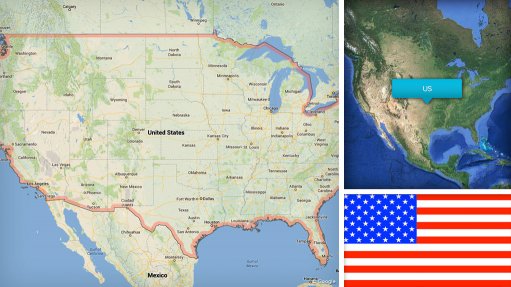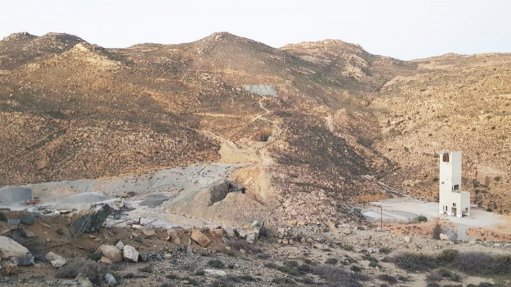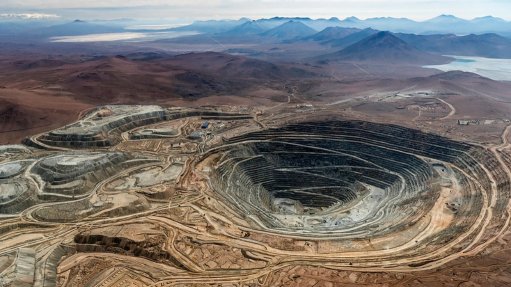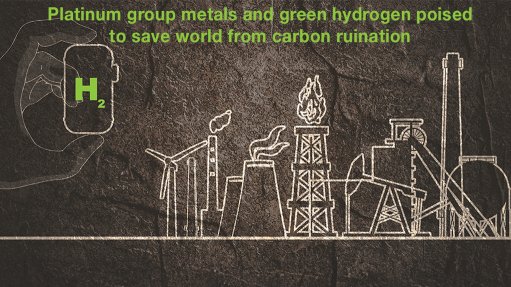Gauteng has enough water for now, but concern raised about surging demand
Gauteng is unlikely to run out water; however, Rand Water, which supplies bulk water to municipalities across four provinces, continues to abstract water beyond its licence.
The water trading entity warns that, despite full dams, increasing abstraction rates in response to demand are unsustainable and the available water needs to stretch beyond just one season as a buffer to ongoing, and sometimes unpredictable, challenges.
The water trading entity, on average, supplies 4 642-million litres of water a day to municipalities, with a capacity to peak at 5 036-million litres a day, which is beyond its abstraction licence, to ensure the municipalities are able to provide their 17.9-million consumers with water.
In response, in October, the Department of Water and Sanitation (DWS) temporarily increased Rand Water’s bulk water allocation as an emergency measure to address water shortages in South Africa’s economic hub.
The self-funded bulk water trading entity, with more than a 3 000 km interconnected network feeding 58 strategically located service reservoirs, has each year produced more water than has been budgeted for as it delivers bulk water supply to 18 municipalities, which account for 80% of water that is reticulated and distributed to consumers.
In recent weeks, consumer water demand across Gauteng has surged, reaching as high as 305 litres per person a day, with higher nondrinking water use, well above the worldwide average of 173 litres and South Africa’s average of 233 litres a day.
Just in the first quarter of the 2023 financial year, water use climbed 5.2% beyond the total potable volumes budget, after registering increases of 1.5% above the budgeted potable sale volumes in the 2022 financial year. In the third and fourth quarters of 2022, the total potable volumes sold were 1.7% and 3.2% above budget respectively.
This high demand amid a heat wave with late rainfall, in addition to excessively high nonrevenue water and leaks, with a loss of up to 40% in the distribution system, is placing strain on Rand Water’s ability to keep apace and ensure a buffer of 60% to 80% at its reservoirs.
Despite the reservoirs hovering between 30% and 40% of the total available reservoir capacity, Rand Water CEO Sipho Mosai assures that every suburb in Gauteng has water.
However, he notes that, with low-lying areas using excessive water in particular for nondrinking purposes, high-lying areas face shortages, owing to an inability to pressurise water supply upwards as reservoirs are depleted.
Further, he says that should the country experience a drought, there needs to be enough water in the dams to feed the reservoirs during any potential dry period.
At the rate water is being consumed, there will be no buffer for next season, despite the dams currently being full.
“The water we have will not last until next season,” he told the media during a briefing at the entity’s headquarters in October, noting that the current high water requirements and overabstraction are just not sustainable.
“We have provided and we have planned for the demand; however, we need to use what we have responsibly,” he said, citing a drop in water use during the mid-October rains as there was no need to use drinking water for irrigation.
“The easiest way out is to use less water or build more infrastructure now and pay more money for water.”
Rand Water has a significant pipeline of infrastructure projects designed in line with predicted demand; however, the current demand requires unplanned additional infrastructure should it continue. This will cause the price of water to surge, an extra cost already cash-strapped consumers will not be able to afford.
The reservoirs are also required to be at a safe zone in case of power outages, which are also causing significant concern for the water trading entity, since it takes about four to five days for a reservoir to recover following an outage.
He said the recent power outages left many Johannesburg suburbs without water.
On September 23, a power failure at Rand Water’s Vereeniging water works resulted in a 50% reduction in bulk water supply to the Eikenhof pumpstation, impacting on the high-lying Crosby, Brixton and Hurst Hill supply zones.
Before the system could recover fully, Rand Water’s Vereeniging works experienced a total power failure on September 25 just after midnight, following which, on September 29, Rand Water experienced a pump trip at its Eikenhof system for about three hours, reducing the pumpstation capacity by 40%.
Further, Rand Water had a power supply issue on September 30 at its Zuikerbosh purification works, which again had a 60% impact on the supply to Eikenhof for about six hours.
On October 3, Rand Water took 200 Mℓ/day supply from the Eikenhof system to boost its Palmiet system, which was at a critical stage.
Comments
Press Office
Announcements
What's On
Subscribe to improve your user experience...
Option 1 (equivalent of R125 a month):
Receive a weekly copy of Creamer Media's Engineering News & Mining Weekly magazine
(print copy for those in South Africa and e-magazine for those outside of South Africa)
Receive daily email newsletters
Access to full search results
Access archive of magazine back copies
Access to Projects in Progress
Access to ONE Research Report of your choice in PDF format
Option 2 (equivalent of R375 a month):
All benefits from Option 1
PLUS
Access to Creamer Media's Research Channel Africa for ALL Research Reports, in PDF format, on various industrial and mining sectors
including Electricity; Water; Energy Transition; Hydrogen; Roads, Rail and Ports; Coal; Gold; Platinum; Battery Metals; etc.
Already a subscriber?
Forgotten your password?
Receive weekly copy of Creamer Media's Engineering News & Mining Weekly magazine (print copy for those in South Africa and e-magazine for those outside of South Africa)
➕
Recieve daily email newsletters
➕
Access to full search results
➕
Access archive of magazine back copies
➕
Access to Projects in Progress
➕
Access to ONE Research Report of your choice in PDF format
RESEARCH CHANNEL AFRICA
R4500 (equivalent of R375 a month)
SUBSCRIBEAll benefits from Option 1
➕
Access to Creamer Media's Research Channel Africa for ALL Research Reports on various industrial and mining sectors, in PDF format, including on:
Electricity
➕
Water
➕
Energy Transition
➕
Hydrogen
➕
Roads, Rail and Ports
➕
Coal
➕
Gold
➕
Platinum
➕
Battery Metals
➕
etc.
Receive all benefits from Option 1 or Option 2 delivered to numerous people at your company
➕
Multiple User names and Passwords for simultaneous log-ins
➕
Intranet integration access to all in your organisation

















